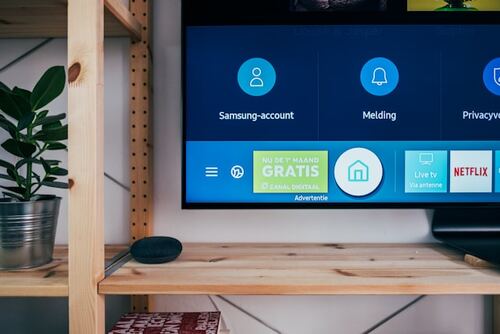Creating an ideal customer profile (ICP) is essential for B2B companies aiming to attract high-value clients. By understanding key business traits, challenges, and buying behavior, companies can focus their marketing and sales efforts. Using an ideal customer profile generator simplifies this process.
What is an Ideal Customer Profile (ICP)
An Ideal Customer Profile (ICP) is a detailed description of the type of company or individual that would benefit the most from your product or service. It helps businesses identify and target high-value customers by focusing on key characteristics like industry, company size, and business challenges. By creating a well-defined ICP, companies can align their sales and marketing strategies to engage prospects more effectively, improving conversion rates and customer satisfaction.
To build an accurate ICP, businesses often use an ideal customer profile generator. This tool analyzes existing customer data, such as firmographics, buying behaviors, and decision-making processes, to provide insights into the kinds of companies that are most likely to become long-term, profitable clients. It allows businesses to streamline their outreach and focus efforts on high-value prospects.
An ideal generator for customer profiles goes beyond basic demographics, focusing on detailed insights that drive smarter marketing campaigns. Businesses can use a customer generator to create targeted content, tailor their messaging, and allocate resources more efficiently, ultimately improving their sales outcomes and growing their customer base.
Key Components of an Ideal Customer Profile for B2B
Creating an ideal customer profile (ICP) is a critical step in B2B marketing and sales. An ICP helps businesses identify their most valuable clients, understand their needs, and create strategies to attract similar customers. A well-defined ICP enables your team to focus on high-potential leads, saving time and resources. Below are the key components every B2B company should consider when building an ICP.
1. Firmographics
Firmographics are the business equivalent of demographics. They include critical characteristics that help define a target company, such as:
- Industry: What industry or sector does the target company operate in?
- Company Size: How large is the company in terms of employees or revenue?
- Location: Where is the company headquartered, and in what regions does it operate?
- Annual Revenue: What is the company’s budget, and how much do they typically spend on services like yours?
Using a tool like an ideal customer profile generator can help streamline this process by gathering and analyzing these data points efficiently.
2. Pain Points and Challenges
One of the most important aspects of an ICP is understanding the pain points and challenges that your target customers face. Identifying these issues allows you to position your product or service as a solution to their specific problems. Common B2B pain points include:
- Inefficient processes: Companies may struggle with outdated systems or manual workflows.
- Lack of expertise: Some businesses lack the in-house talent or knowledge to solve complex problems.
- Cost management: Many businesses seek solutions that will help them reduce operational costs or improve their bottom line.
By identifying these pain points, you can fine-tune your messaging to address how your product or service can solve these problems. An *ideal generator* can be helpful in collating feedback and case studies that identify these issues.
3. Decision-Making Process
In B2B sales, the decision-making process is often more complex and involves multiple stakeholders. It’s important to understand:
- Who makes the decisions: Is it the CEO, department heads, or a purchasing committee?
- Influencers: Who are the people influencing the final decision, even if they aren’t the direct buyer?
- Sales cycle: How long does it take for a company to go from interest to purchase?
Understanding the decision-making process ensures that your outreach is targeted to the right people, at the right time, and with the right messaging.
4. Buying Behavior
Finally, analyzing the buying behavior of your ideal customer can offer valuable insights into how they make purchasing decisions. This includes:
- Budget constraints: Understanding the financial capabilities of your target customers can help in pricing strategies.
- Research habits: How do they find and evaluate vendors? Are they more influenced by case studies, webinars, or peer reviews?
- Frequency of purchase: How often do they require your type of product or service? This helps predict long-term revenue potential.
Tools like a customer generator can help automate the tracking of these behaviors and provide data-driven insights to optimize your sales and marketing strategies.
Steps to Create an Ideal Customer Profile for B2B
Creating an ideal customer profile (ICP) is essential for B2B companies looking to optimize their marketing and sales efforts. A well-defined ICP helps businesses focus on the most valuable clients, increasing revenue and efficiency. Below are the steps to create an effective ICP, using tools like an *ideal customer profile generator* or *customer generator* to streamline the process.
- Step 1: Analyze Your Best Clients. Start by examining your most successful client relationships. Look for patterns among your top customers, such as company size, industry, revenue, and specific needs. Identify which clients bring the most value and are the easiest to work with. Understanding these attributes will help you build a framework for your ICP. You can use an *ideal generator* to assist in pinpointing these common traits.
- Step 2: Conduct Market Research. After analyzing your current clients, it’s essential to research the broader market. Look at industry trends, competitor data, and market opportunities. This helps you understand where your business fits in and how you can attract similar high-value clients. Market research tools, reports, and industry publications can provide valuable insights to refine your ICP.
- Step 3: Interview Existing Clients. Talking directly to your current clients is one of the best ways to gain deeper insights into their needs and buying behavior. Conduct interviews or surveys to ask why they chose your company, what challenges they faced before working with you, and how your product or service has helped them. This information helps to shape a more accurate ICP.
- Step 4: Use Data and Analytics. Leverage data from your CRM, marketing automation tools, and sales records to gather insights into your customers’ behavior. Analyzing metrics like customer lifetime value, average deal size, and sales cycle length can highlight critical characteristics of your ideal customer. You can also use an *ideal customer profile generator* to automate parts of this analysis and simplify data collection.
- Step 5: Develop Customer Segments. Once you have all your data, it’s time to develop customer segments. Group similar customers based on firmographics, needs, and behavior. This segmentation allows you to tailor your marketing and sales efforts to each group, increasing your chances of success. Refining these segments will create a more targeted and effective ICP.
By following these steps, you can develop a clear and actionable Ideal customer profile, enhancing your ability to attract and retain high-value clients in the B2B space.



